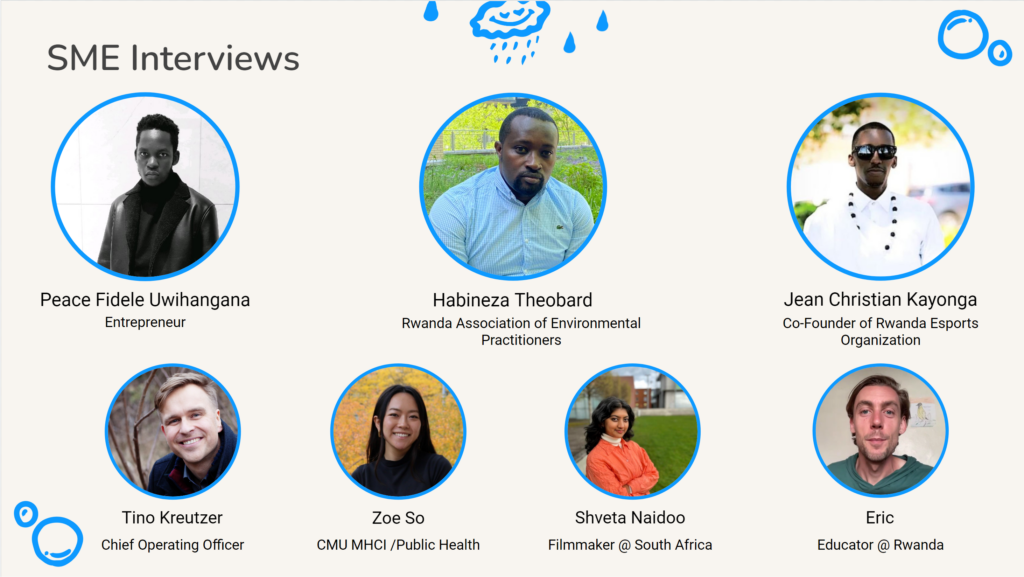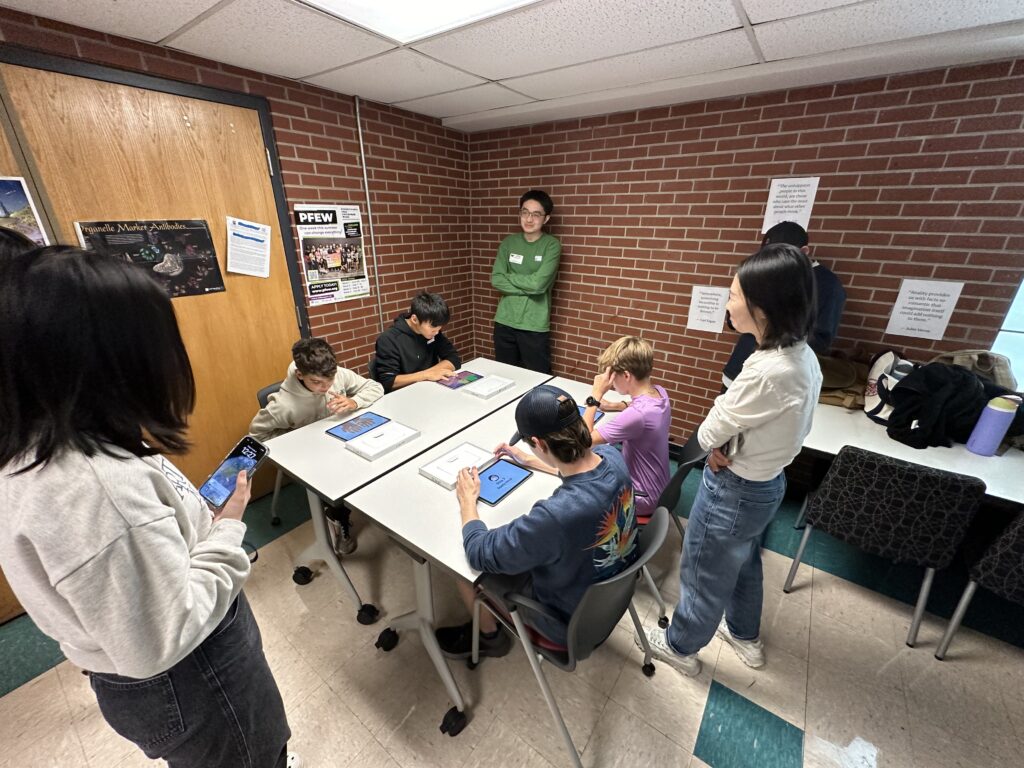We’re making toward our halves presentation, where we’ll showcase our project’s progress and direction. This week, the team focused on refining our presentation while moving the game development forward and conducting multiple playtests to gather valuable insights.
Expert Interview
Chris Kayonga
This week, the team met with Chris Kayonga, Co-Founder of Rwanda Esports Organization which seeks to inspire Rwandan youth using Esports not only through playing but also education on the industry. He has experience working with children in rural areas, introducing games as tools. His insights were invaluable, especially for adapting our design to better resonate with the target audience:
- Game Preferences: Kids in these areas are drawn to sports-themed games like football and have a natural ability to learn and adapt to new games quickly.
- Localized Content: Games designed with African themes tend to resonate more with children in these regions, making cultural relevance essential for engagement.
Chris also provided feedback on our character design:
- He appreciated the patterns we used but suggested incorporating brighter colors to make the visuals more vibrant.
- He recommended that the character be more confident and humorous, helping build a stronger connection with players.
- Adding a celebration ceremony at the end of the game could reinforce a sense of achievement and fun, encouraging positive reinforcement.

These insights will guide our next steps as we refine the character design and gameplay elements to align better with the preferences of our target audience.
Eric Buron
Yawen also had a productive interview with Eric Buron, who has lived in Musanze for four years and founded a community program called Turabizo. His program, developed with local people, offers six studios: Film, Food, Fitness, Mentorship, Art, and Lodging.
Since our past SMEs were based in Kigali, Eric provided valuable insights into life in Musanze, a smaller, more rural town:
- Community Life: Musanze feels more like a small town, with only a few main roads, and everything is easily accessible by foot or bike. Eric shared that the locals made him feel like part of a big family, which motivated him to stay and help the community.
- Children’s Access to Technology: Many children in Musanze enjoy technology, but access is limited. Most only have basic track phones for communication, and even public schools don’t have tech devices. When exposed to modern technology like smartphones, the kids were amazed by how unfamiliar it seemed.
- Daily Activities and Interests: During their free time, kids in the program enjoy playing football, collecting scrap metal to sell, and swimming in rivers (though these rivers, formed by volcanic water, can become dangerous when it rains).
Eric expressed a strong interest in our project and is willing to meet with us again before our trip to Rwanda, offering further insights into the needs and challenges of children in Musanze.

Game Development
Our main focus has been completing the prototype for Mini-Game 2 before the next playtesting session. The concept is simple but engaging: the player rides a soap bar while surfing across a giant foot, aiming to defeat as many germs as possible along the way.
Art
Our artists conducted thorough research on the common germs found on feet that can cause diseases. Using these references, they’ve started creating 3D models of the germs to add more authenticity and educational value to the game.


Programming
Tyler, our programmer, has been working hard to perfect the surfing mechanics. One of the key challenges has been ensuring the player stays attached to the foot’s surface—even when they slide to the bottom. It was no easy task, but Tyler managed to overcome it.
Below is a sneak peek of Mini-Game 2 in action:
Playtesting
We conducted two playtests this week to gather external feedback and evaluate how well the game is shaping up.
Tuesday: ETC Playtest Night at Hunt Library
We tested the game with fellow classmates, who are more advanced gamers than our target audience. Their feedback was constructive, highlighting areas for improvement:
- The instructions were unclear, making it difficult for players to understand the gameplay flow.
- The game’s pace needs some adjustment to make it more engaging and accessible.

Friday: Playtesting with Middle School Students
On Friday, we visited a middle school and tested the game with 9th graders—closer in age to our target audience of 10 to 14-year-olds. The students enjoyed the game and understood the message it conveys, but their feedback gave us new perspectives as they found the different interaction mechanics across various sections of the game a bit confusing.

These insights are essential as we continue refining the game in preparation for future iterations.
Halves Presentation
With the feedback and progress we’ve made, we are now focused on fine-tuning both the game and our presentation. The halves presentation is a crucial milestone, giving us the chance to showcase our achievements so far and align everyone on the path forward.
